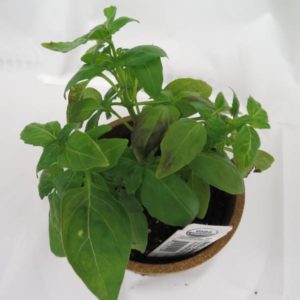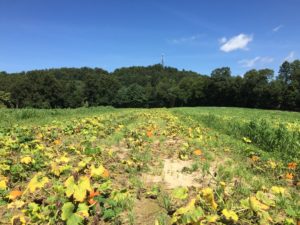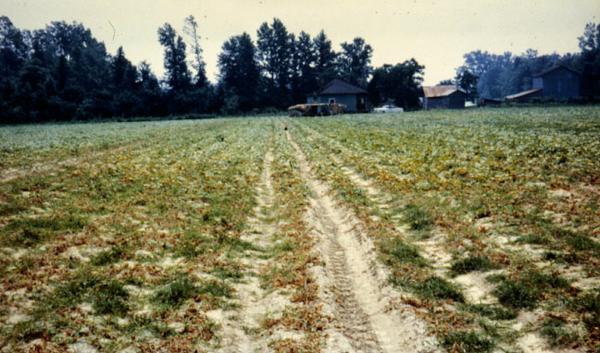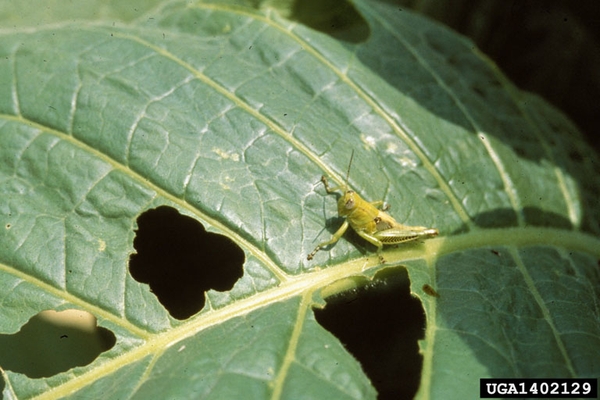Tickborne Diseases Are Likely to Increase, Say NIAID Officials
NIH/National Institute of Allergy and Infectious Diseases The incidence of tickborne infections in the United States has risen significantly within …



El inglés es el idioma de control de esta página. En la medida en que haya algún conflicto entre la traducción al inglés y la traducción, el inglés prevalece.
Al hacer clic en el enlace de traducción se activa un servicio de traducción gratuito para convertir la página al español. Al igual que con cualquier traducción por Internet, la conversión no es sensible al contexto y puede que no traduzca el texto en su significado original. NC State Extension no garantiza la exactitud del texto traducido. Por favor, tenga en cuenta que algunas aplicaciones y/o servicios pueden no funcionar como se espera cuando se traducen.
Inglês é o idioma de controle desta página. Na medida que haja algum conflito entre o texto original em Inglês e a tradução, o Inglês prevalece.
Ao clicar no link de tradução, um serviço gratuito de tradução será ativado para converter a página para o Português. Como em qualquer tradução pela internet, a conversão não é sensivel ao contexto e pode não ocorrer a tradução para o significado orginal. O serviço de Extensão da Carolina do Norte (NC State Extension) não garante a exatidão do texto traduzido. Por favor, observe que algumas funções ou serviços podem não funcionar como esperado após a tradução.
English is the controlling language of this page. To the extent there is any conflict between the English text and the translation, English controls.
Clicking on the translation link activates a free translation service to convert the page to Spanish. As with any Internet translation, the conversion is not context-sensitive and may not translate the text to its original meaning. NC State Extension does not guarantee the accuracy of the translated text. Please note that some applications and/or services may not function as expected when translated.
Collapse ▲NIH/National Institute of Allergy and Infectious Diseases The incidence of tickborne infections in the United States has risen significantly within …

Orange striped oakworms started hatching in Raleigh this week. They have one generation per year. Adults emerge in mid …

Most tree species are fed upon by spider mites and many even have their own species. These include maple …
During every berry-picking season in the Pacific Northwest, blueberry and raspberry growers fight to prevent birds from gobbling up …

Last week, NCDHHS announced the first death in 2018 due to West Nile virus (WNV). Although details were sparse …
Basil downy mildew (BDM) has been observed in our sentinel plots at the Mountain Research Station in Waynesville. Symptoms …

Cucurbit downy mildew (CDM) was confirmed on a cucumber leaf from a commercial field in Henderson County on July …
Article written by David Hardy, NCDA&CS RALEIGH, N.C. — With the growing season for summer agronomic crops underway and many …
This is a post by Hannah Burrack and Dominic Reisig, entomology researchers and extension specialists at NC State. This post is part …
This is a post by Matt Bertone, an entomologist and extension associate at NC State. This post is part of our …
When it comes to understanding, and lowering, the risk that cockroaches pose to urban children’s health, an NC State …

Dr. Douglas Meckes, State Veterinarian of North Carolina, and Dr. Carl Williams, State Public Health Veterinarian of North Carolina, …

Editor’s Note: This is a post from Elsa Youngsteadt, an entomology research associate at NC State. This post is part of our …

Earworm populations (known as bollworm in cotton) were relatively low in our system from 2011 to 2016. Arguably, at …

This week I have noticed damage on many pin oaks (Quercus falcata) by oak spider mites (Oligonychus bicolor). Oak …

Honey Bees – When summer weather turns hot and dry, honey bees (and other insects) will frequently seek out any …

We received a confirmed report of basil downy mildew in North Carolina. Growers are advised to actively scout for …

Due to the recent run of warm, wet weather, conditions are ideal for the development of late blight (Phytophthora …

As the flooding recedes in western North Carolina, many growers are now reporting losses due to Phytophthora diseases on …

The intense rainfall, flooding and mudslide damage in western North Carolina and other areas of the state have created …

This publication describes the invasive Callery pear species, its offspring, and how it can harm …
This factsheet describes the biology of the cane lace bug or bamboo lace bug, Leptodictya …

This factsheet describes the biology of the banded sphinx moth or lesser vine sphinx, Eumorpha …

This factsheet describes the biology of the elm-grass root aphid, Tetraneura ulmi, and provides residential …

Gummy stem blight is caused by several closely related fungal pathogens in the genus Stagonosporopsis …

This vegetable pathology factsheet describes the identification and treatment of anthracnose in cucurbits.

Several species of grasshoppers can cause foliar feeding damage in tobacco. They are typically most …

This Extension publication provides an overview of the tobacco budworm (Chloridea virescens), a common pest …